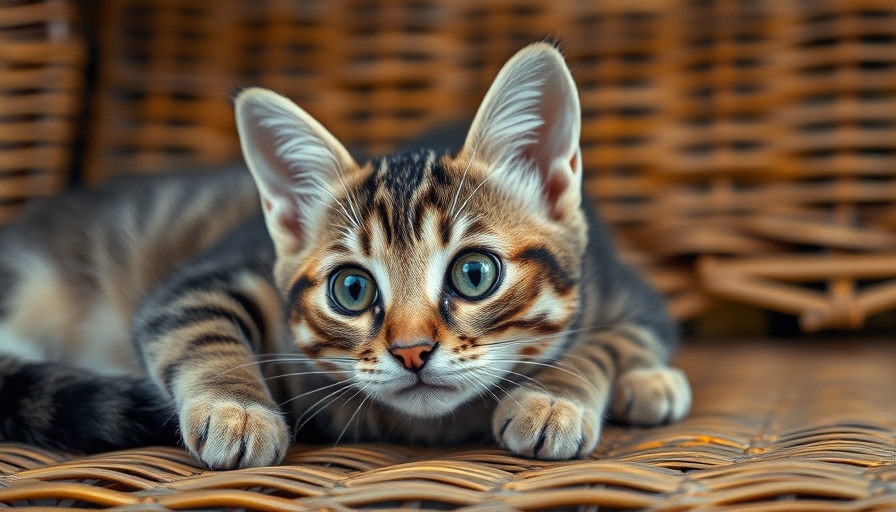
Protecting Your Indoor Cat: 15 Common Mistakes to Avoid
As pet parents, we often believe that providing a safe indoor environment is enough to ensure our cats thrive. However, hidden dangers and missteps can silently harm our furry friends. Understanding these pitfalls is crucial for nurturing a happy, healthy cat. Let's explore 15 common mistakes that even the most well-meaning owners might make—and learn how to correct them.
In 'If You Have an Indoor Cat, Never Do This (Warning)', the discussion dives into common mistakes that could be harming your feline friend, urging us to further explore how these pitfalls can disrupt their happiness and health.
Prioritizing Pain-Free Alternatives
Declawing, often mistaken for a simple grooming practice, is a significant harm to our cats. This procedure is not merely cosmetic; it involves amputating the entire first joint of each toe, which can lead to serious physical and psychological ramifications. It's crucial to embrace humane methods like regular claw trimming and providing scratching posts instead. This ensures your cat can still stretch and mark territory without sacrificing its well-being.
The Importance of Mental Stimulation
Indoor life presents safety for our cats, yet it can inadvertently strip them of the mental challenges they engage with in the wild. Boredom can lead to destructive behavior or stress, so it’s vital to create a dynamic living space. Rotate toys, incorporate interactive games, and offer perching spots for your cat to observe the outside world. These efforts foster not just amusement but enrich their emotional and cognitive health.
The Hidden Dangers of Household Products
Many household items can be toxic to cats, so vigilance is key. From cleaning agents to certain plants, being informed can prevent accidental poisonings. Opt for natural cleaning solutions and ensure harmful substances are stored safely out of paw’s reach. This precaution will keep your home a safe haven for your feline companion.
Feeding Habits Matter
Free feeding low-quality food might seem convenient, but it often leads to obesity and a plethora of health issues. Instead, providing scheduled meals of high-quality, protein-rich cat food is essential. Consider incorporating puzzle feeders to mimic hunting behavior and promote gastrointestinal health. Remember, what you feed your pet has a profound impact on their vitality.
The Reality of Indoor Risks
It's a common misconception that indoor cats are fully protected from illnesses and injuries. Regular vet visits are essential to detect underlying health issues early. Moreover, ensure your home is structured to safeguard against common dangers like falls from windows or balconies. Installing secure screens keeps your cat's curiosity from leading to tragedy.
Understanding Feline Behavior
Cats will be cats! Engaging in natural behaviors such as scratching or climbing can be annoying to some owners, but suppressing these instincts causes confusion and anxiety in cats. When undesirable behaviors arise, remember to redirect and provide suitable outlets instead of punishment. This approach fosters stronger bonds between you and your pet, ensuring their emotional needs are met.
Creating a Calm Litter Box Environment
The litter box is fundamental to a cat’s comfort. A dirty or poorly placed box can lead to stress and aversion. Ensure cleanliness by scooping daily, opting for the right size box, and choosing an appropriate litter type. A well-maintained box enhances their sense of security in a shared space, encouraging appropriate habits.
Routine Interactions and Environmental Enrichment
Cats thrive on routine and enjoy interaction. Daily play for even a short period can alleviate stress while also keeping your cat fit and satisfied mentally. Set playtimes and let your cat explore different environments to break the monotony. Adding variety to their surroundings not only keeps them interested but also nurtures their emotional health.
Early Detection of Health Issues
Monitoring your cat’s behavior closely is one of the most effective ways to detect health issues early. Changes in eating, sleeping, and interaction habits shouldn’t be ignored. Engaging intimately with their daily patterns and being proactive about vet visits enhances their chances of receiving timely care.
The Impact of a Clean Living Space
Regular cleaning of your cat’s environment is paramount. A tidy home positively impacts not just your cat's health, but also their comfort and happiness. Maintain clean beds, bowls, and litter spots to minimize health risks and to show your cat the love and care they deserve.
Meeting Your Cat’s Emotional Needs
Safety is not synonymous with well-being. An indoor cat needs stimulation that appeals to their instincts. Develop enriching environments that consider climbing, observation, and hunting behaviors. Remember, it’s not just about survival; it’s about giving your cat a life worth living!
Conclusion: Intentionally Caring for Your Cat
Every choice we make as pet parents significantly affects our cats' quality of life. By avoiding these common mistakes, we create healthier, happier feline family members. Our cats deserve the best, and a small amount of attention can go a long way in ensuring their well-being.
For more tips and insights into cat care, consider exploring resources related to indoor pet enrichment and veterinary advice. Keeping our pets happy and healthy should always be a priority!
 Add Row
Add Row  Add
Add 




Write A Comment